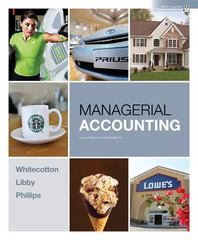Question
11. Which type of accounts receivable confirmation would normally be considered More Reliable: a. Negative b. Notable c. Positive d. Possible 12. Checking extensions of
11. Which type of accounts receivable confirmation would normally be considered "More Reliable":
a. Negative
b. Notable
c. Positive
d. Possible
12. Checking extensions of sales quantity and unit prices [multiplications] on sales invoices is what type of evidence?
a. Analytical review
b. Confirmation
c. Inspection of documents
d. Recalculation
e. None of the above
13. Auditors sometimes use ratios as audit evidence. For example, an unexplained INCREASE in the ratio of gross profit to sales may suggest which of the following possibilities?
a. Fictitious purchases
b. Fictitious sales.
c. Selling expense recorded as general expense.
d. Unrecorded Sales.
14. The auditor reviews the detail to the accounts receivable Account which has a general ledger balance of $100,000.
Detail Support
Customer Balance
A $70,000
B 40,000
C (30,000)
D 20,000
--------
Total $ 100,000
========
a. Type of evidence Scanning; Accounts receivable to be reported on balance Sheet $130,000.
b. Type of evidence Scanning; Accounts receivable to be reported on balance Sheet $100,000.
c. Type of evidence Analytical Review; Accounts receivable to be reported on balance Sheet $130,000.
d. Type of evidence Analytical Review; Accounts receivable to be reported on balance Sheet $100,000.
15. Consider the following statements:
I. A transaction (audit) trail includes the documents and records that allow an auditor to trace a transaction from its origination through to its final disposition, or vice versa.
II. A "Control Problem" exists "when the design or operation of a control does not allow management or employees, in the normal course of performing their assigned functions, to prevent or detect and correct, misstatements on a timely basis".
a. I is true; II is true
b. I is true; II is false
c. I is false; II is true
d. I is false; II is false
16. A "Batch" consists of the following input:
* Input - Customer Amount
Number
120 $100
465 200
789 300 After input, the computer prints a "financial total" of $420
How would the manager know this was an input error?
a. Reimput the batch to see if a different total is shown.
b. Foot [add] the amounts before the batch is input comparing the total to the computer financial total.
c. Have another employee also prepare the input batch and run the second batch through the system.
d. There is no way to know if an error occurred.
17. A clerk steals a cash receipt from a customer. The cash was meant to pay an accounts receivable owed by the customer. The clerk attempts to hide the theft by using a later cash receipt from another customer, recording the money in the account of the previous customer.
a. This scheme is referred to as Lapping.
b. This scheme is referred to as Leaving well enough alone.
18. An aged trial balance of accounts receivable is normally used by the auditor to evaluate the adequacy of the allowance for doubtful accounts involving accounts receivable. The company's credit terms are 2% 10, net 30. The aged trial balance was made on December 31, year 1. The auditor reviews the work on January 30, year 2. An outstanding accounts receivable on December 31, year 1 was for a sale invoiced on October 16, year 1 would be classified on the aged trial balance as:
a. Current.
b. Past due
c. More than 30 days past due.
d. More than 60 days past due.
19. The accounting clerk steals a customer's check meant to pay The customer's account balance. To remove the accounts receivable from the accounting records, the clerk writes off [debit allowance for doubtful accounts, credit accounts receivable] the customer's account. This scheme is likely to be discovered because:
a. The customer will demand repayment.
b. The customer will be told that it will be necessary to pay cash for purchases in the future since their account had been written off in the past.
c. The clerk will forget which account was written off.
20. All of the following are control deficiencies except:
a. Absence of appropriate reviews of transactions.
b. fixed assets are financed with long-term debt.
c. Inadequate documentation of the components of internal control.
d. The absence of an internal process to report deficiencies in internal control to management on a timely basis. e. All of the above represent control deficiencies. f. None of the above represent control deficiencies.
Step by Step Solution
There are 3 Steps involved in it
Step: 1

Get Instant Access to Expert-Tailored Solutions
See step-by-step solutions with expert insights and AI powered tools for academic success
Step: 2

Step: 3

Ace Your Homework with AI
Get the answers you need in no time with our AI-driven, step-by-step assistance
Get Started


